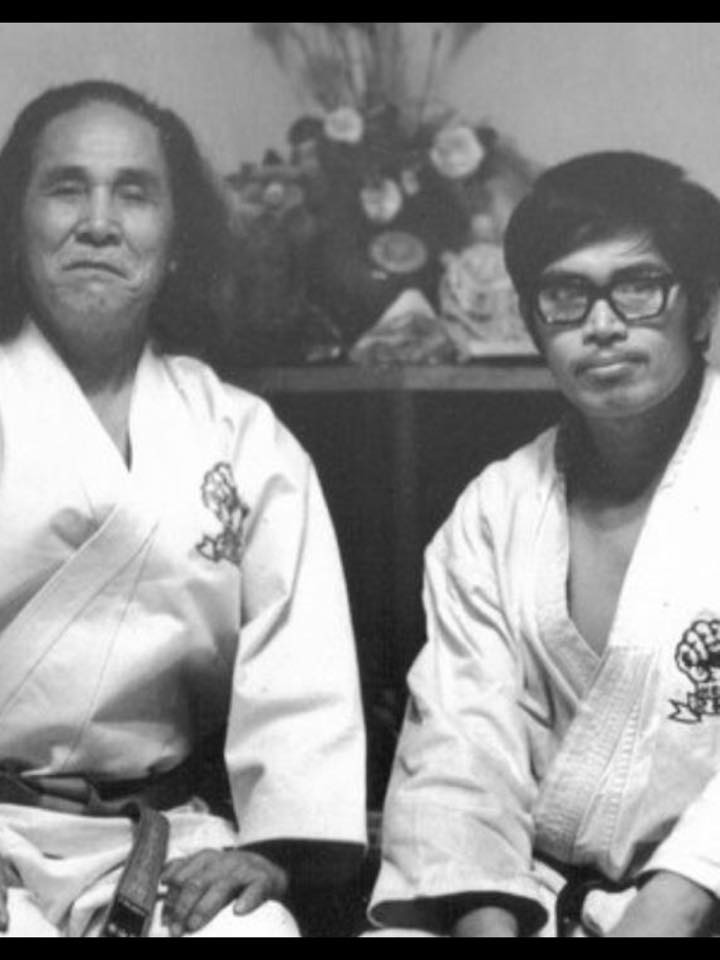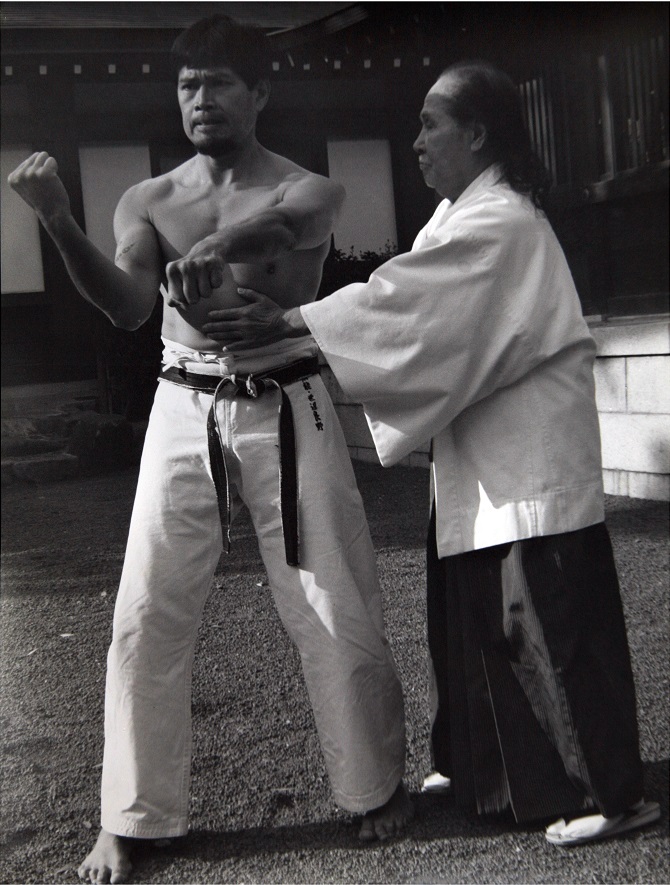
Tino Ceberano was born and raised in Hawaii on the island of Kauai. Of Filipino-Spanish decent, his father was a Filipino migrant who came to Hawaii as a professional boxer who also acquired the skills of Filipino stick fighting when he settled in Hawaii.
In Hawaii, it wasn’t uncommon for everyone to be involved in fights as a youngster and most boys had some basic martial arts experience. In the pre-war days, boxing was a popular pass-time on the island with martial arts such as Judo, Jujitsu, Kung Fu, Karate, knife and stick fighting also learned at a young age.
Martial arts simply existed in Hawaii and the predominant nationalities of the time; Portugese, Chinese, Filipino, Hawaiian, Puerto Rican, and Japanese, all became closer in the way that they were constantly exchanging ideas and learning pieces from different styles influenced by their ethnic background.
There were no set martial arts organisations in Hawaii. People basically learned the arts by watching someone fight or by getting into a fight themselves. People eventually learned that each art was associated with a particular group and the multicultural existence in Hawaii highlighted what became the forerunner of Western Martial Arts even before Karate was introduced to mainland America.
A young Tino was trained by his father in Arnis and boxing which was the common practice instead of Karate. The Chinese would refer to Shorin Kempo as to what Shaolin Kempo was. The Okinawans referred to Okinawa-te instead of Kara-te.
This was taught mostly on the ‘closed door’ basis in the mid thirties until Hawaii was visited by other instructors as they migrated there or on a visit by invitation and continued information was provided.
Kempo was actually introduced to Tino by his neighbour, Sensei Fred Imperial of the ‘Lone Pine tree system of Kempo’, who was a returned soldier from the Korean campaign. He would gather up a group of kids ranging between twelve and seventeen years old and they would train after school and really get stuck into each other.
It wasn’t until 1959, when as a 17 year old joining the Marines, that Tino learnt to value his martial arts. At this time he remembers a sweeping change in people’s perception of the martial arts right across Hawaii.

Goju-Kai started in Hawaii in 1958. Kyokushin-kai was slightly before that and Shotokan was at about the same time.
All before that there was Kempo and Okinawa-te but it wasn’t so serious. Then all of a sudden something changed.
They began to understand the values of the arts and became a lot more fine tuned about how they should be practiced and the classes began to be organised.
Anton Navas was Tino’s most revered teacher who really took him by the hand and showed him what the true meaning of the arts was all about between 1959 until 1966.
Anton Navas was the Sempai who would also be the right hand man of Sensei Masaichi Oshiro who established the teaching of Gogen ‘The CAT’ Yamaguchi in Hawaii. Anton became Tino’s mentor and friend who guided him during his initiation to the Goju Kai at the Hawaii Shibu (branch).
Anton Navas Sempai was the person who showed young Tino the Goju way of being strong in his foundation and being attentive to his words of instruction. He constantly reminded Tino ’To fall seven times is to rise eight, life begins now’. This phrase deeply influenced Tino and set him on a track that in many ways stayed with him from his early history until present time.
Joining the Marines changed Tino’s life immensely. From living as an islander to being part of the armed forces elite and living much more a Western life-style was almost a cultural shock for him.
Tino participated in the Fleet Marine Force Pacific Band Drum and Bugle Team marching squad where he played the bugle. It was with the bugle team that Tino first came to Australia which he toured in 1962 both playing the bugle and exchanging ideas and practice on combative warfare which was part of a highly confidential military operation at the time. The team eventually finished up in Okinawa and Japan for four months and it was on his first trip to Tokyo that Tino met up with the legendary founder of Goju-Kai, Gogen Yamaguchi.
In 1966, Tino arrived in Australia with his family and instantly initiated moves to introduce the relatively unknown world of Karate to the continent. Tino’s martial arts style was well received here. Judo at the time was the mainstay martial art and it was everywhere and was everyone’s ideal of a fighting technology. At the time, Karate was still nonexistent.
Tino performed a demonstration at a local Judo club which was so well received he was asked to regularly perform demonstrations at all of the Judo clubs. From here the popularity of Karate just mushroomed. He would have as many as 60-100 people in a class.
The style he taught was very hard. His reasoning for this was that at the time, people wouldn’t really take on the likes of the ritualistic type of regimented training involving a lot of repetitions. So he gave them exercise as well which either made them or broke them and that was to sort out the mentally and physically strong from the weak.
This hard style proved something as well. It made the name associated with the school a strong one and the school gained a high standing and became a strong foundation for what martial arts was going to be like in the future.